The Webley Revolver: Sidearm of an Empire
January 18th, 2022
7 minute read
September 15, 1916, was a Friday. As dawn broke on this fateful day, the French 6th and British 4th Armies squared off against the Imperial German 1st Army in France. This assault precipitated the third phase of the Battle of the Somme, World War I’s largest engagement on the Western Front. Some three million men tore at each other, spilling a veritable sea of blood. Fully a third fell as casualties. The Battle of the Somme was one of the costliest conflicts in human history.
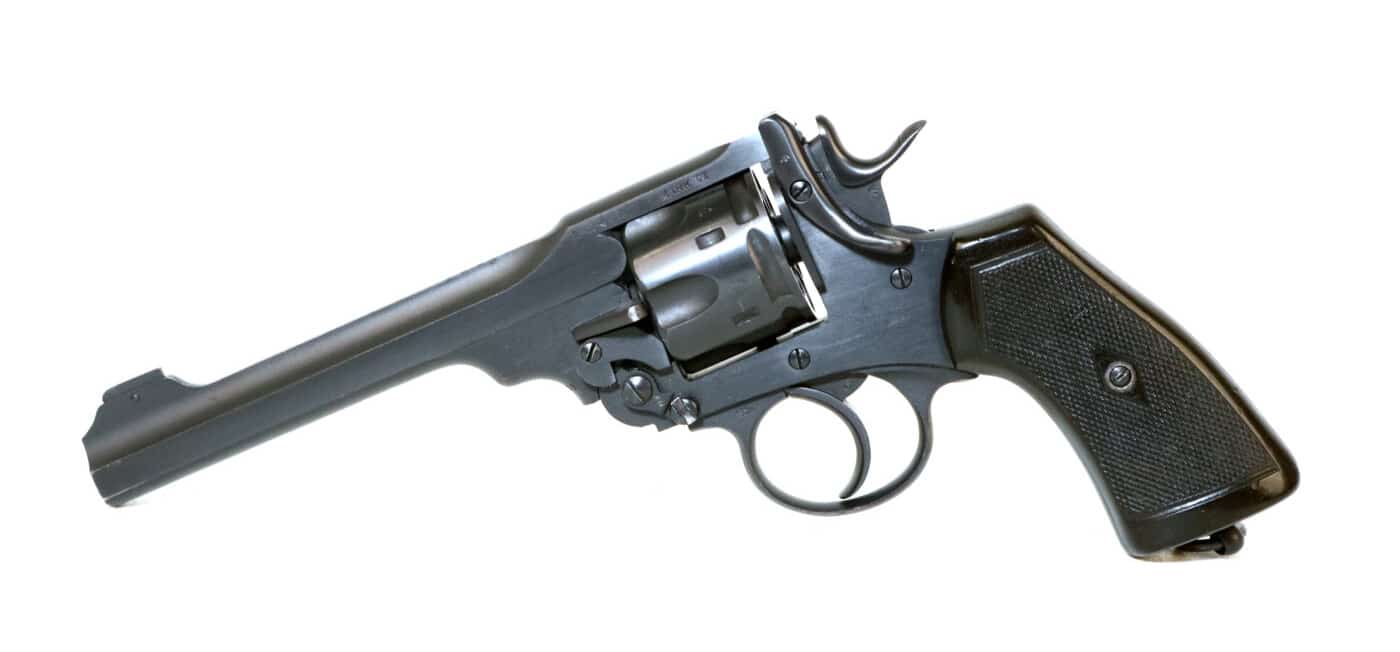
While the Battle of the Somme established any number of milestones in mankind’s timeless effort to annihilate itself, it also saw the first massed employment of tanks. The British Mk 1 tanks used during this engagement were intended to provide mobility. In a war characterized by a ghastly protracted stalemate, these advanced wonder weapons were expected to be the catalyst that got the Tommies up and out of their trenches and into the mobile fight. The lessons learned from this early armored assault shape land warfare to this very day.
The Mk 1 tank came in two broad variants denoted by the strangest terminology. One version sported a crew of eight, three Hotchkiss 8mm machineguns, and two 6-pounder cannons. This version was called the “Male.” Sporting a top speed of 3.7 miles per hour and an all up weight of 28 tons, the Mk I Male packed the heaviest punch.
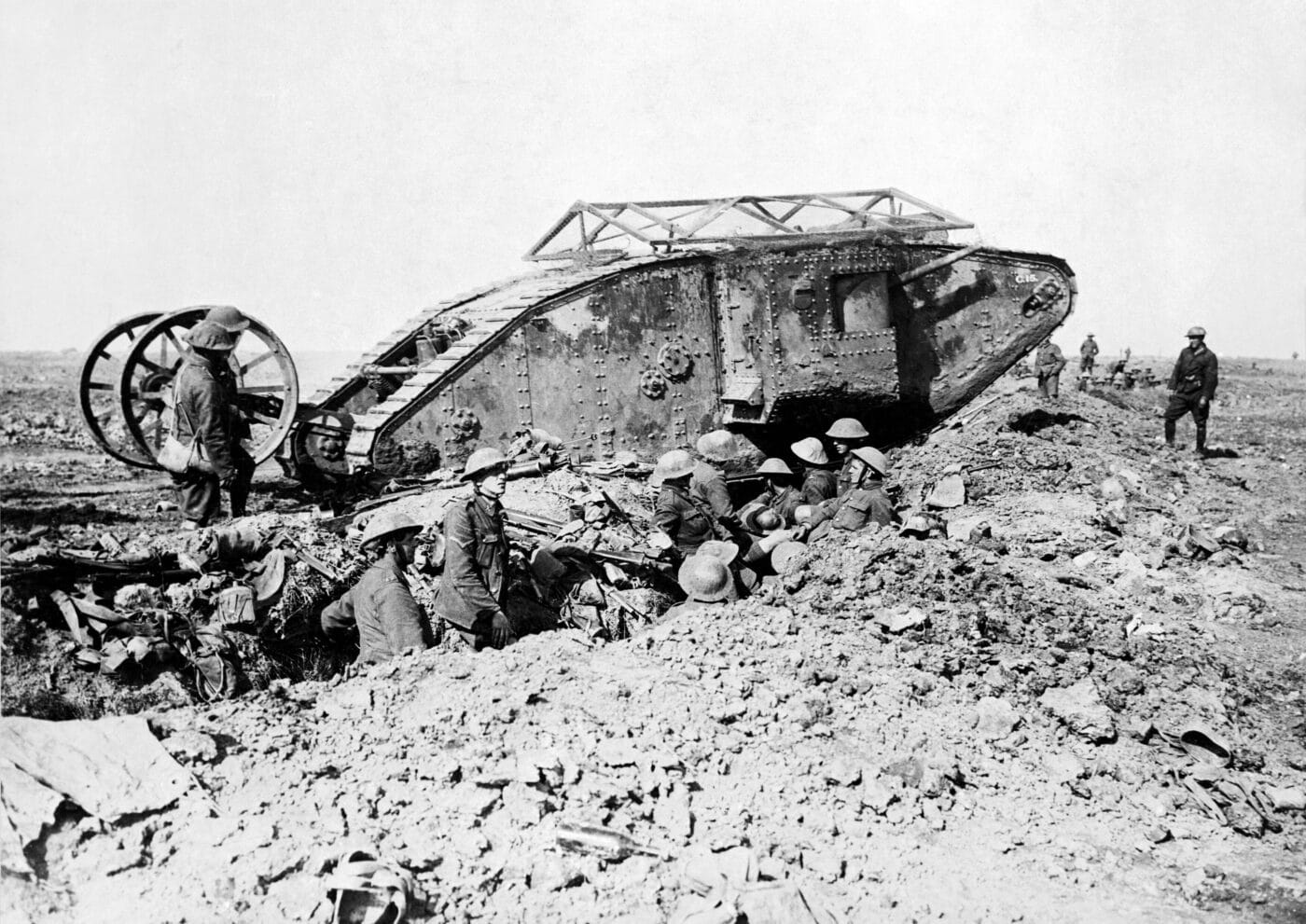
The “Female” version weighed 27 tons and carried four .303-in Vickers guns as well as one French Hotchkiss. These things were crammed with machinegun ammunition and served to support the cannon-armed Male versions as well as friendly infantry. Both contraptions were little more than death traps. The noxious fumes from their primitive internal combustion engines quite literally poisoned the crews at times. They also horrified the Boche.
Lieutenant Arthur Herbert Blowers commanded D5, one of the female tanks. Blowers was born on November 5, 1891, in Knodishall, Suffolk, the 13th of 14 siblings. He called his radical new armored war machine “Dolphin.”
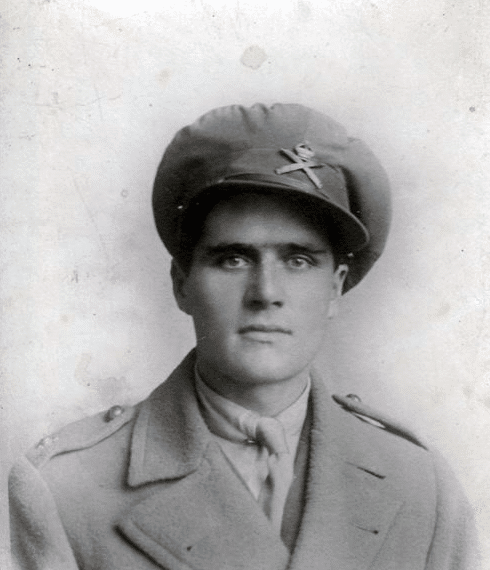
Blowers and his crew guided the Dolphin across No Man’s Land as part of a coordinated assault against the German trenches. They made excellent progress at first, but eventually the Boche begin swarming the vehicles. German artillery in the direct fire mode took a toll as well. Most of the British tanks were eventually disabled or destroyed. However, their appearance on the battlefield signaled a paradigm shift in the nature of ground combat.
With the Dolphin immobilized by artillery, Blowers and his men burned through the entirety of their belted ammunition for all five of their machineguns. By now the tank was on fire, and the crew was forced to abandon it. It was here that Lt. Blowers’ day got truly interesting.
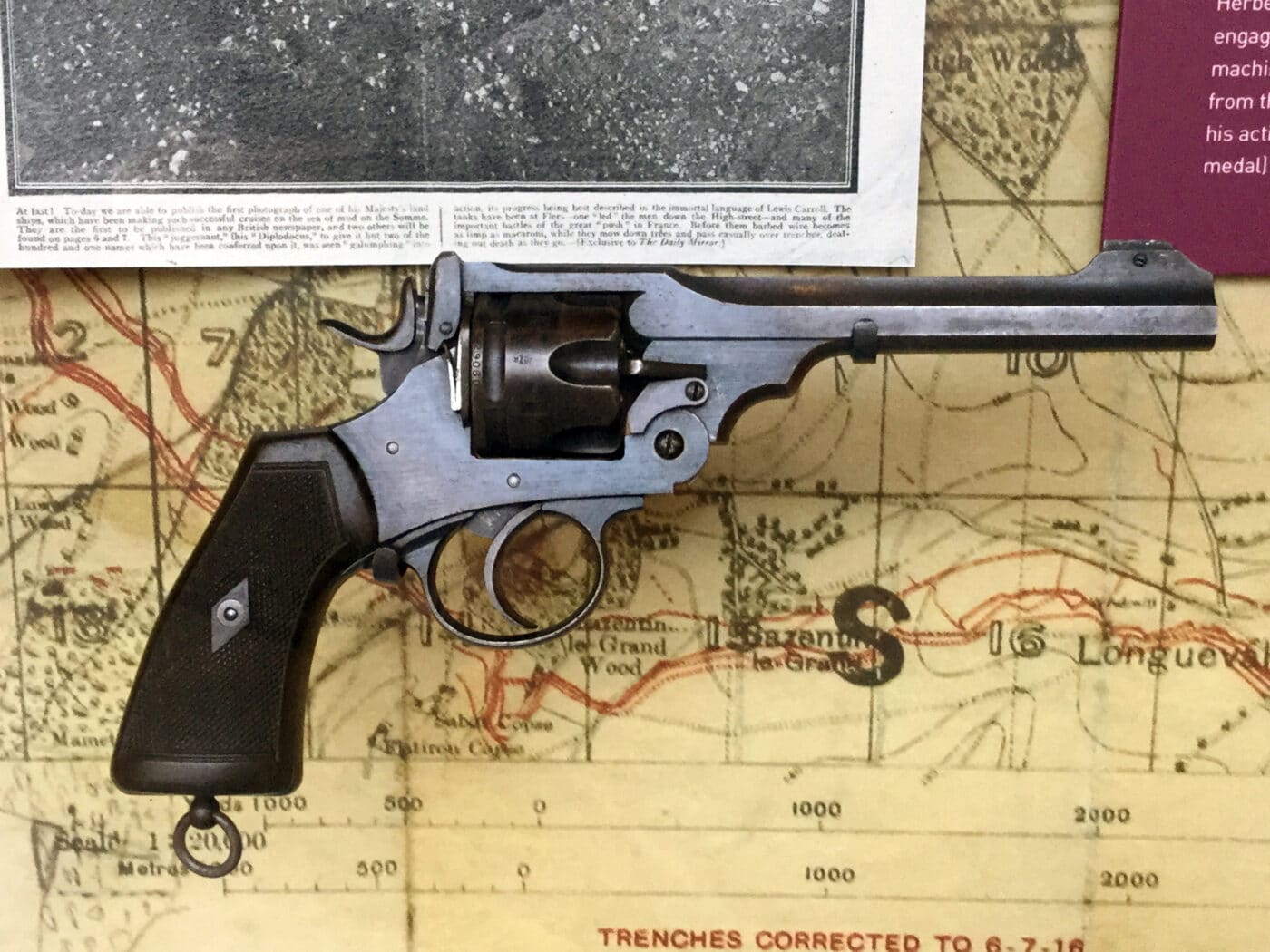
Once clear of the tank, Lt. Blowers took a piece of shrapnel to his head that he ultimately carried with him to the grave. Blowers nonetheless still returned to the burning Dolphin to rescue his driver trapped inside. With the wounded man in tow, he then made his way back to friendly lines armed with nothing more than his issue Mk VI Webley revolver.
Lt. Blowers later said of that trusty pistol, “I fired over a hundred rounds … none of the targets was more than about 10 yards away, so I didn’t miss many!”
The Weapon
The handgun Lt. Blowers used to fight his way back across No Man’s Land was known as both the Webley Top-Break Revolver or the Webley Self-Extracting Revolver. The gun served for three-quarters of a century as the standard-issue service pistol for the British armed forces. Introduced in 1887, the Webley was not retired until 1963. Though offered in both .455 and .38/200 chamberings, the basic mechanism remained unchanged.
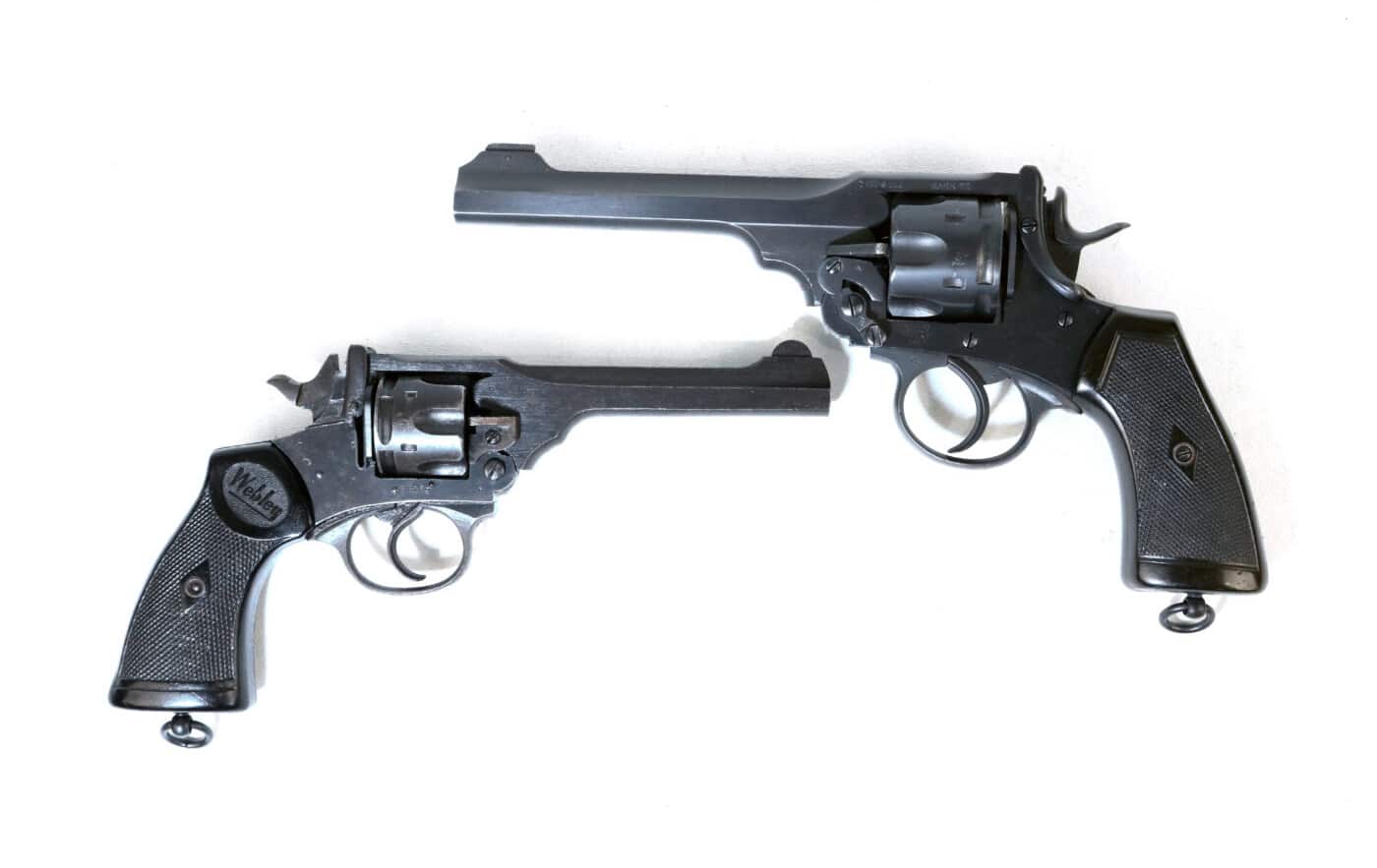
The Webley was produced in six different “Marks”, starting in 1887. The majority of the guns in service were the Mk IV in .38/200 and Mk VI in .455. The Mk IV saw extensive service during the Boer War, while the heavier Mk VI was introduced in 1915 for service throughout World War I. Roughly 600,000 copies were produced.
The Mk IV .38-caliber Webley launched a fairly uninspired .38/200 round, also known as the .38 Super Police. The .38/200 cartridge pushed a 200-gr. soft lead bullet to around 600 feet per second. Despite its marginal ballistics, this long soft bullet did tend to destabilize in flesh and create impressive wounds.
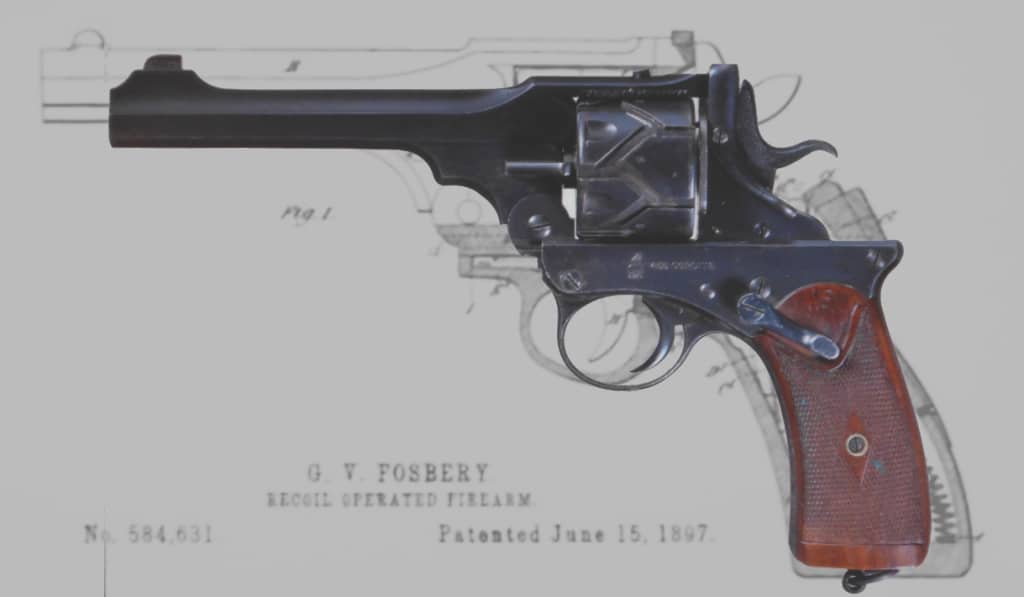
Subsequent Mk VI Webley revolvers were chambered for the heavy .455 rimmed cartridge. Many of these surplus WWI-era wheelguns had their cylinder faces shaved to accept .45 ACP rounds on moon clips. However, the pressures generated by .45 ACP cartridges far exceed those of even .455 proof loads. Many modern shooters running these shaved Mk VI pistols will handload underpowered .45 ACP rounds and feed them using pressed steel clips.
Mechanical Details
The Webley’s double-action/single-action (DA/SA) trigger combined with its top-break action made the old British wheelgun exceptionally efficient for its genre. The top-break design made for exceptionally fast reloads. Pressing the release catch and tipping the barrel down and forward automatically activated the Webley’s star-shaped extraction system. This exercise extracted and ejected all six cases in a single move.
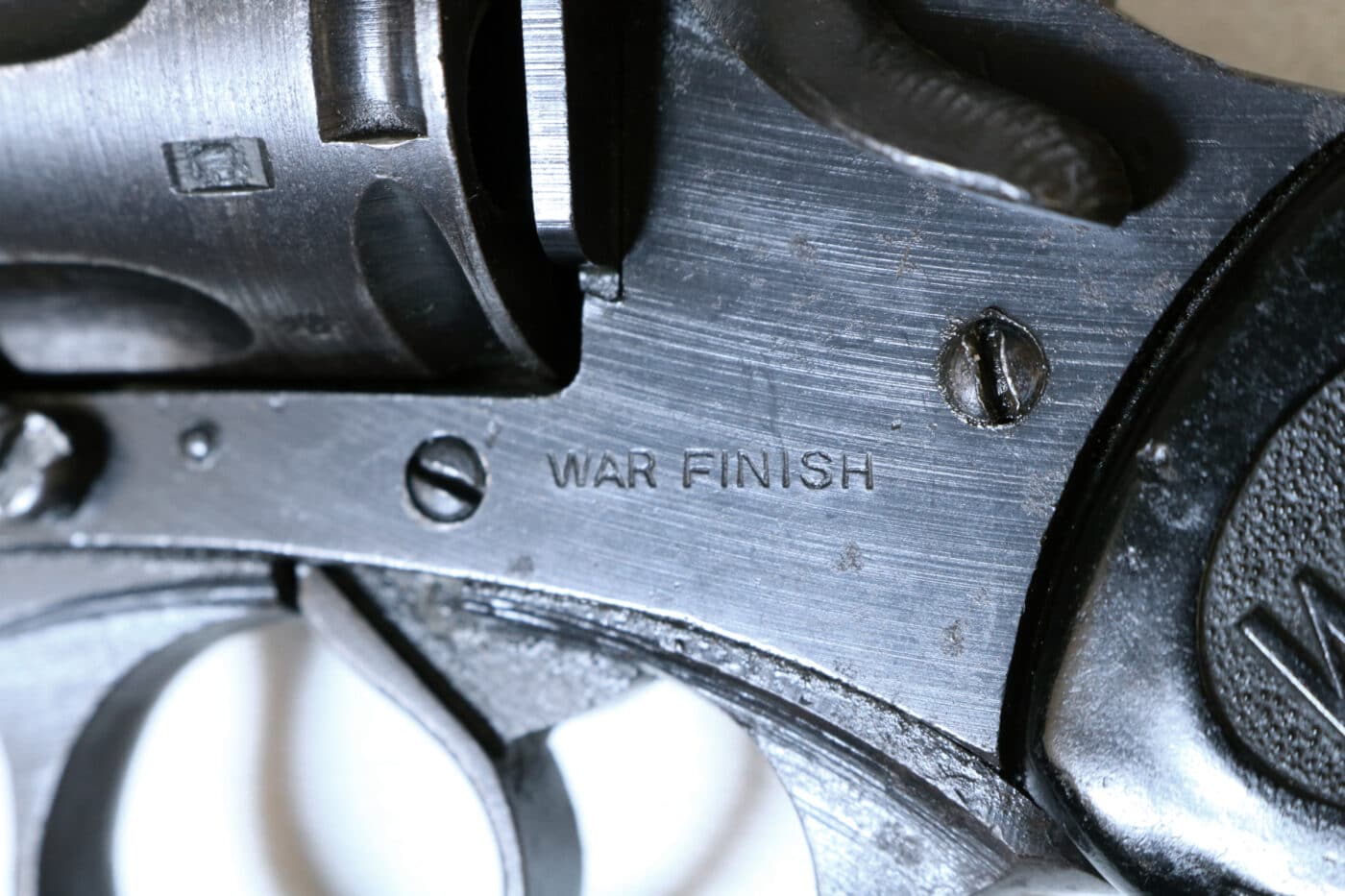
While individual cartridges still had to be tediously loaded one round at a time, running the gun was still markedly faster than a more traditional weapon like the Colt Single Action Army. The Webley represented the state of the art for its day.
Their Money’s Worth
If properly maintained, these rugged revolvers last about forever. As these old vintage guns soldiered on into the 1960s, the limiting reagent became their weird, obsolete ammunition. A British armorer tasked with maintaining these weapons in active military service in Germany in the 1960s was quoted as having said the ammo allotment would be, “two cartridges per man, per year.”
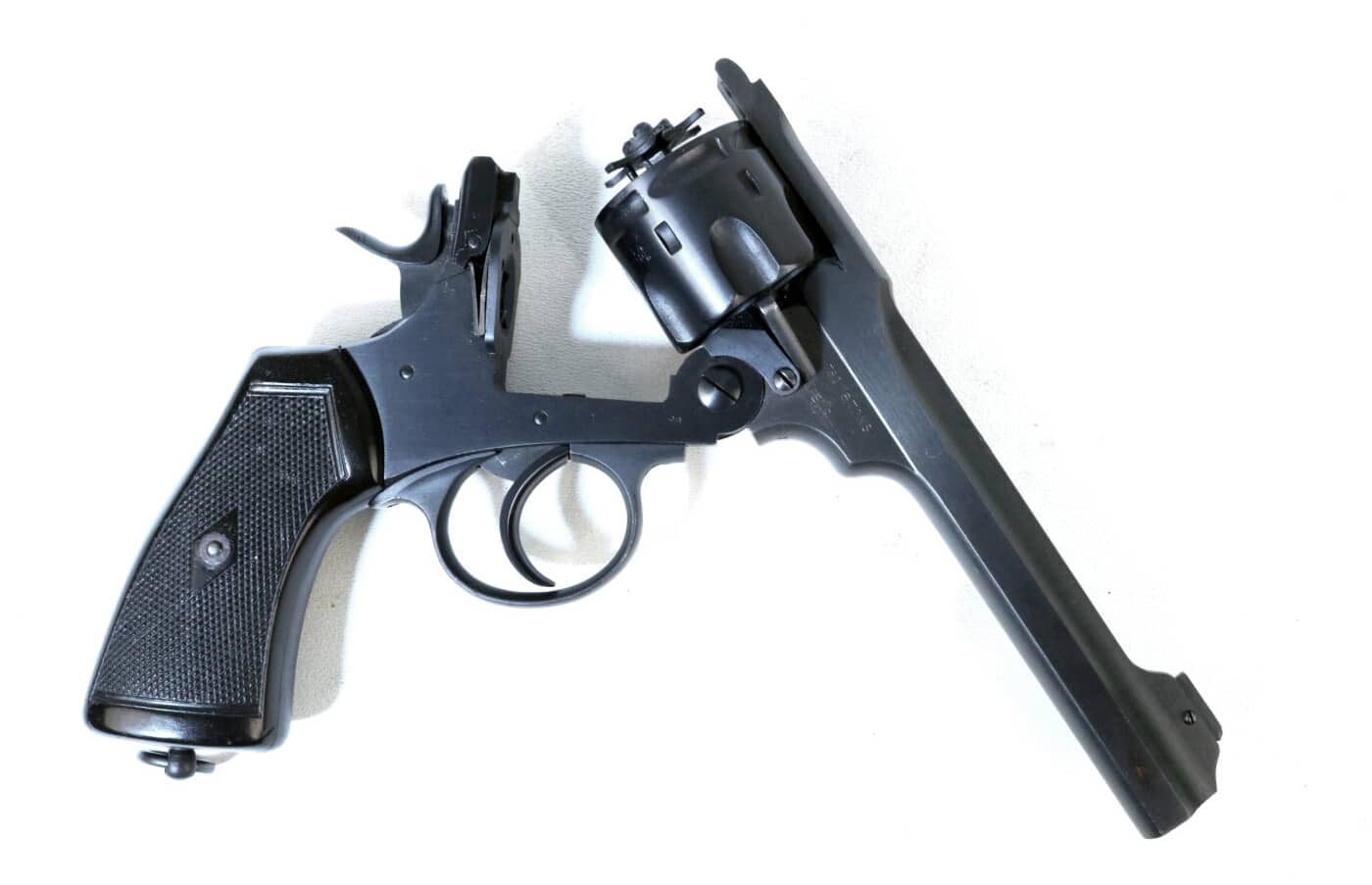
The British also fielded a similar pistol called the .38/200 Enfield No 2. The Enfield looked a bit like the Webley but was mechanically dissimilar. The Mk1* was the same Enfield revolver with the hammer removed for double-action-only operation. Bobbing the hammer spur helped keep the gun from catching on stuff within the confines of an armored vehicle.
One of the more bizarre variants of this rugged design was the Webley-Fosbery automatic revolver. Produced for 15 years starting in 1900, this weird autoloading wheelgun included a sliding upper half driven by recoil forces. This complex mechanism indexed the cylinder and cocked the hammer automatically. The result was a light, pleasant trigger that made it a popular target gun. Vintage Webley-Fosbery revolvers are just stupid expensive these days.
Denouement
At a time when most of the world was fielding advanced autoloading designs, the British filled the hands of their tankers and fliers with this 19th-century DA/SA break-open wheelgun. As a result, the Webley family of revolvers endeared itself to generations of Englishmen. Alongside iconic weapons like the Spitfire fighter, the Sten submachine gun and the Lee-Enfield rifle, the Webley revolver subsequently came to represent the long arm of the British Empire.

Arthur Herbert Blowers was quite a piece of work. Later in life, he said when boredom overtook him in the trenches he purportedly would leap up and race along the parapet of the British trenches in full view of the German gunners. His goal would be to reach the next opening in the defensive works before the Maxim gunners could wake up and draw a bead on him. They just don’t make them like that anymore.
Cpt. Arthur Blowers died in Spixworth, Norwich, Norfolk, United Kingdom of liver cancer in 1980. He was 89. His actions leading the armored assault deep into German lines and subsequently rescuing his crew under fire earned him the Military Cross, Britain’s third-highest award for gallantry in action. The remarkable Webley Mk VI revolver that he carried during that engagement is on display at the Bovington Tank Museum in Southern England today. Arthur Blowers was a larger-than-life hero and an archetype for the indefatigable British soldier.
Editor’s Note: Please be sure to check out The Armory Life Forum, where you can comment about our daily articles, as well as just talk guns and gear. Click the “Go To Forum Thread” link below to jump in and discuss this article and much more!
Join the Discussion
Continue Reading
Did you enjoy this article?

 274
274






